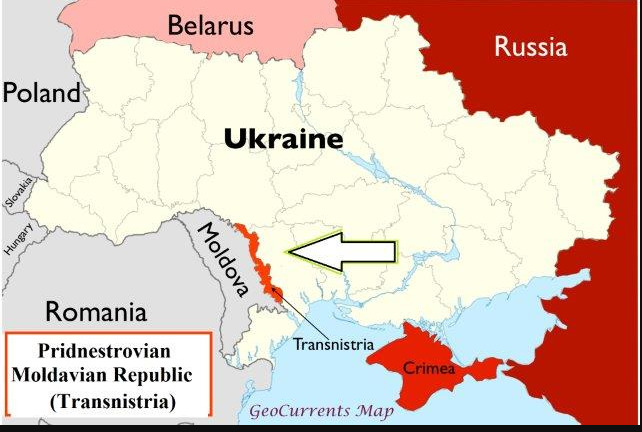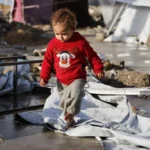
Moldova could be considered as a staging area for US and NATO forces in the event of a Russian victory and the dismemberment of Ukraine.
By Stephen Bryen April 5, 2024
Big problems could be brewing in tiny Moldova, which is starting to look like a staging area for the European Union to compensate for a Russian victory in Ukraine. It is unclear whether this plan, if attempted, will be successful. But Moldova is not the most stable country in the world, with the nation divided between pro-EU and pro-Russian elements.
American troops are currently in Moldova with the Romanians, apparently for a military exercise called JCET 2024 (Joint Command Exchange Training). The exercise began on April 1st and will continue until April 19th.
According to a statement from the Moldovan Ministry of Defense, “the objective of the exercise is joint training and exchange of experience between Moldovan, Romanian and American special forces, as well as increasing the level of interoperability between the participating contingents. This year, the event will also be attended by representatives of the State Protection and Security Service [moldavo] and Panther Special Forces.”
These exercises are not new, but they now take on a new urgency due to the evolving situation in neighboring Ukraine.
Strategic Dialogue Group
The US sponsors what it calls the Moldova-US Strategic Dialogue in Chisinau, the capital of Moldova. The dialogue focuses on areas of cooperation that include justice sector reforms and the fight against corruption, human rights, promoting a pluralistic media environment and rights-respecting media policies to combat disinformation, energy diversification and resilience, defense modernization and transformation, civil protection, border management, cybersecurity, combating cross-border threats, combating illicit trafficking in weapons and ammunition, combating the proliferation of weapons of mass destruction and related materials, human response to needs of refugees and expansion of interpersonal ties.
The United States has made nearly $320 million in new economic, security, and humanitarian assistance available to help Moldova. This assistance includes $30 million in non-refundable budget support disbursed in December 2022 for the purchase of electricity. According to the US State Department:
The United States, working with Congress, also plans to make an additional $300 million available for energy assistance in Moldova to respond to urgent needs created by Russia’s war of aggression against Ukraine and strengthen Moldova’s resilience and energy security , including an additional $80 million in budget support to address energy and electricity costs.
The purpose of the State Protection and Security Service, which is separate from the Moldovan army, is to protect senior government officials.
Officially, Moldova is supposed to be a neutral country. There is talk of changing its constitution to allow it to join military alliances and, potentially, NATO. Joint training with foreign countries (the US and Romania) appears to violate current constitutional neutrality provisions.
Romania is interested in developing its military relationship with Moldova. Legislation is pending in Romania that allows it to intervene outside the country. These actions would not be limited to military ones, but could also involve other types of interventions to combat hybrid threats. The new law focuses on Moldova and Ukraine.
Romania supplies 80-90% of Moldova’s energy. It built a gas pipeline linking Cisenau to Romania, largely financed by grants and loans from the European community. Moldova no longer receives gas from Russia.
According to Romanian sources, there are 600,000 Romanian citizens in Moldova (most with hybrid citizenship). Romania is positioning itself to “protect” its Moldovan citizens in the event of conflict.
Moldova is the second poorest country in Europe, after Ukraine. In 2022, Moldova’s per capita income was $5,688. Ukraine’s was 4,005 dollars (before the current war). Eastern Europe has a per capita income of $11,855.
The territory of Moldova lies between the Dniester and Prut rivers, the area once known as Bessarabia. The majority of the population is Eastern Orthodox.
There was once a large and prosperous Jewish community in the country. Chisinau, the capital of Moldova, was 46% Jewish. In the Kingdom of Romania, during the Holocaust, it is estimated that between 380,000 and 400,000 Jews died in the areas then controlled by Romania, including Bessarabia, Bukovina and Transniestria.
Romania ranks first among the countries that perpetrated the Holocaust, with the exception of Nazi Germany. There are currently around 15,000 Jews in Moldova and Transniestria.
In Moldova, the country is divided into two camps: the pro-EU camp on one side and the pro-Russian camp on the other. Currently, the pro-EU camp is in power.
He banned pro-Russian opposition parties and organizations and arrested some of their leaders. Furthermore, the ruling party closed 13 television channels and social media outlets, claiming they were linked to Russia.
Until mid-March, the pro-EU party did not allow opposition candidates to run in local or national elections.
An illustrative case is that of the current elected governor of the Gagauz autonomous region, Evghenia Gutsul. Gagauzia is a Russian Orthodox, Turkish-speaking entity located in southeastern Moldova.
Gutsul was a member of the Shor (or Sor) party, a pro-Russian party that was outlawed by the current government. She was not allowed to run for public office under the party’s banner and was accused of helping to illegally finance the Shor party. She then decided to run as an “independent” candidate and won easily. Gutsul is close to Moscow and President Vladimir Putin.

In March, Moldova’s Supreme Court ruled that the outlawing of the Shor party was illegal.
Meanwhile, other countries are taking a lot of interest in Moldova. An interesting example: The Germans are providing police to reinforce the border with Ukraine. Germany has joined an EU-sponsored project to “guarantee the security” of Moldova.
Police prevent smuggling, but according to reports, critics say the efforts being stepped up are primarily aimed at preventing Ukrainians from evading conscription and returning them to Ukraine, where they face prison sentences or are thrown into the front lines in the fight against Russia.
How this activity fits into European human rights legislation is an open question.
France is also activating key units of its Foreign Legion – many of which are currently unemployed after being expelled from some African countries. According to press reports, it is likely that 1,500 soldiers from the French Foreign Legion will be sent to Ukraine or Moldova in May or June.
French President Emmanuel Macron has been working overtime to try to obtain NATO’s support for intervention in Ukraine.
Transniestria
Transniestria is a breakaway region, officially known as the Pridnestrovian Moldavian Republic, which has its own government and armed forces. It is located on the eastern side of the Dnistria River and its capital is Tiraspol. The European Parliament declared that this area is under Russian occupation.
There is a Russian military contingent in Transniestria, but it is made up of only 1,500 soldiers. There is also a huge cache of Russian ammunition, a matter of great interest to the ammunition-hungry Ukrainians. The Transniestria army is made up of 5,000 active personnel and 16,000 reservists. Much of their equipment is antiquated.
In comparison, Moldova has an army of 6,500 active personnel and 2,000 annual recruits. Moldova claims to have a reserve force of 65,000 personnel. It is not known how reliable these numbers are.

For foreign troops to operate from Moldova towards Ukraine, they would have to take control of Transniestria or, alternatively, place military forces in Gagauzia, which would probably trigger a civil war.
Strategic importance
Moldova, by itself, has no strategic importance. However, it could be a staging area and a starting point for a strategy that targets the city of Odessa, in southern Ukraine, and, perhaps, Crimea, annexed by Russia.
What appears to be taking shape in Europe is a kind of Plan B – essentially, what to do if the Ukrainian army collapses. European experts and some public officials are increasingly opining that Ukraine’s days as an independent entity may be coming to an end.
Russian officials are contributing to the dialogue, saying they want a huge buffer zone in any deal with Ukraine, a cordon sanitaire to prevent NATO from threatening Russian territory and vital interests.
Assuming that the dire predictions of war come true, a future Ukraine could consist of an annexed Russian area, a pro-Russian regime in Kiev, a buffer zone, and western Ukraine taken over by Poland, potentially cut off with some of its neighbors.
However, NATO would like to have a counterweight to a Russian victory. This could mean, in addition to the return of the Ukrainian city of Lviv to Poland, an attempt to protect Odessa and perhaps threaten Crimea, which the Russians consider a vital territory for their security and historical importance.
The construction of Moldova as a staging area therefore seems like a potential emerging strategy, the beginning of a Plan B. However, there are problems with using Moldova as a staging area.
Its policy is very unstable and, if the Russians effectively intensify their efforts in that country, the pro-EU faction could face a cloudy future. This could result in Moldova no longer being an EU stopping point.
Alternatively, the EU, through Romania and other countries, could send troops to protect the pro-EU regime currently in power, which could lead to a bloody internal conflict.
Stephen Bryen was director of the Near East Subcommittee of the U.S. Senate Committee on Foreign Relations and a deputy on the U.S. Senate Foreign Relations Subcommittee.
Original article in English here.
Source: https://www.ocafezinho.com/2024/04/08/moldavia-o-plano-b-da-otan-em-caso-de-vitoria-da-russia/

